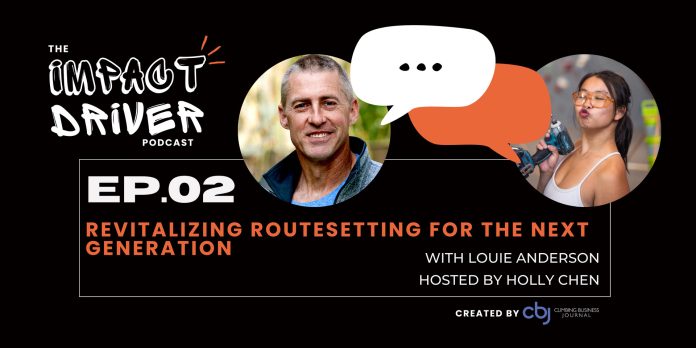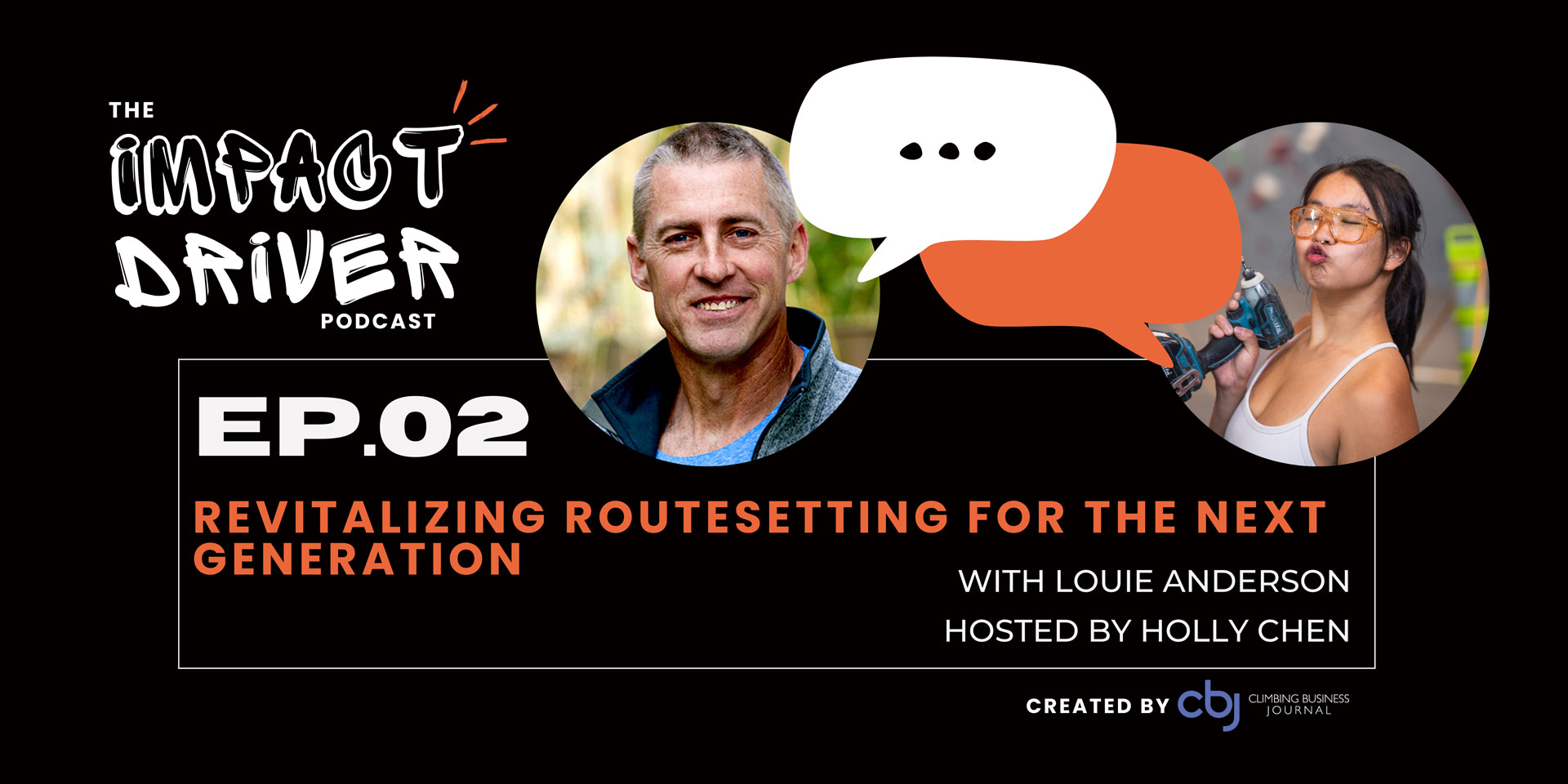
Today’s guest is Louie Anderson, a setter who needs no introduction, but we’re going to introduce him anyway for the listeners who may be new to routesetting. Louie has been heavily involved in the U.S. setting industry since its beginning. Setting since 1987, Louie is also a route developer, a hold shaper, and he owns the Ten Sleep Rock Ranch in Wyoming. Nowadays, Louie is known for hosting advanced setting clinics all over the country, new gym and competition setting consultations, and manages the popular Setter Showdown routesetting competition.
Thank you TRUBLUE and Butora for your support!
And thank you Devin Dabney for your music!
Timestamps
00:00 – Intro
01:47 – Changes in routesetting over the years
02:51 – Wins achieved in the setting trade
04:11 – What does diversity do for the industry?
05:42 – Challenges in the industry currently
06:28 – How setting styles have shifted
08:03 – Trends seen in hold shaping
10:23 – Movement away from big holds?
11:22 – Keeping watch on the trends
12:43 – Diversity in a routesetting team
14:16 – Advice to head routesetters or mentors
16:33 – Benefits of professionalization in the industry
18:23 – Routesetting education
21:00 – Problem solving in the routesetting community
22:31 – Louie’s biggest mentors/influences
25:16 – History of hosting setting clinics
27:18 – Demographic changes in setting clinics
31:52 – Skill progression across Setter Showdown events
32:02 – How routesetters can self-educate
36:36 – About the Setter Showdown
41:44 – Showdown community evolution
49:08 – The impact of the Showdown
54:20 – Looking forward
56:08 – Closing
Abridged Transcript
CHEN: What are some of the biggest evolutionary changes you’ve witnessed the industry go through?
ANDERSON: First of all, there are a lot more setters. It’s actually something that people are recognized as doing. When I first started doing it, it was just how we got a free membership; there was no real trade craft necessarily. And then I think the second thing is the gyms are much larger now. Popularity of climbing has increased…So I think that the industry now is really ripe for growth. A lot more of what we’re doing is recognized and starting to be supported…
What is one of the biggest wins you think the setting trade has achieved in all these years?
There’s a lot better understanding of body mechanics and movement, and it’s not just putting small holds really far apart to make something hard. We’ve realized that there are lots of other ways that you can control difficulty. I think that, to one degree, it’s more of a scientific approach to setting. But I think also it’s become a lot more accommodating and open to folks of different backgrounds…
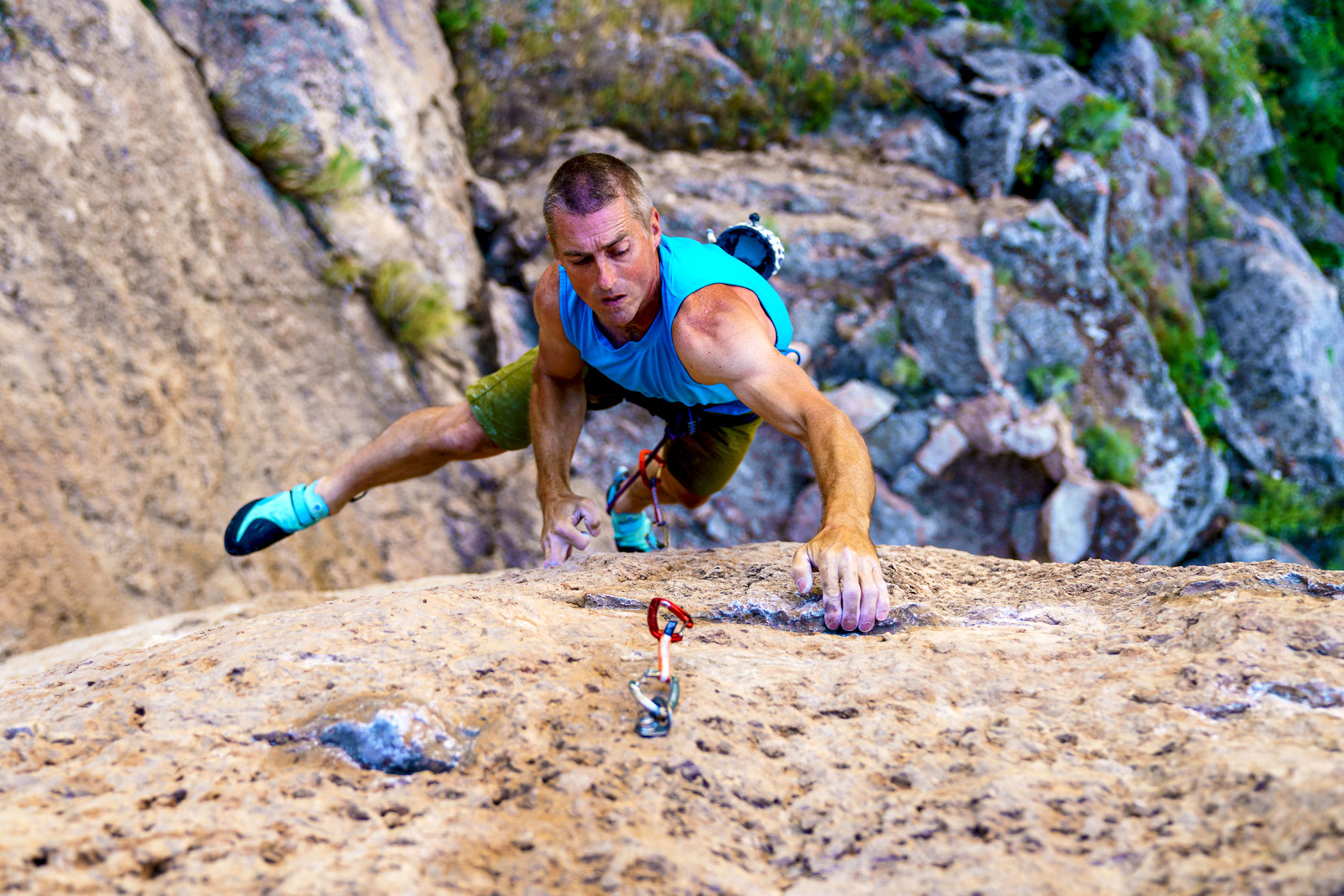
What do you think that diversity in a setting crew is bringing the industry?
I think that there’s a lot of things. First of all, the climbing industry, primarily we’re selling a product. A lot of us back from my generation looked at it as training for outdoor climbing, and that’s still certainly a component of it, but now we’re talking about a big business. We’re selling an alternate fitness program to going into a weightlifting gym or something like that. A lot of the folks that go to the climbing gyms will never climb outdoors. They don’t really care about training for their project at wherever their outdoor crag is. They want to go there and have a good time with their friends. It’s more social…I think people seeing someone who they can relate to as someone who looks like them, someone who they feel is represented in the industry and on the setting team in the gym, makes them feel a little bit more welcome…
What are some of the biggest challenges you see facing the industry right now?
…We don’t have enough qualified setters to man gyms. The gyms are opening at a much faster rate than our trained setters are there, and we just don’t have that many people who can run setting programs. The gyms are getting larger, which means larger teams. Some of the more talented and skilled setters are cherry picking jobs and bouncing back and forth from one location to another, which kind of leaves a void where a lot of these newer gyms don’t have qualified setters.
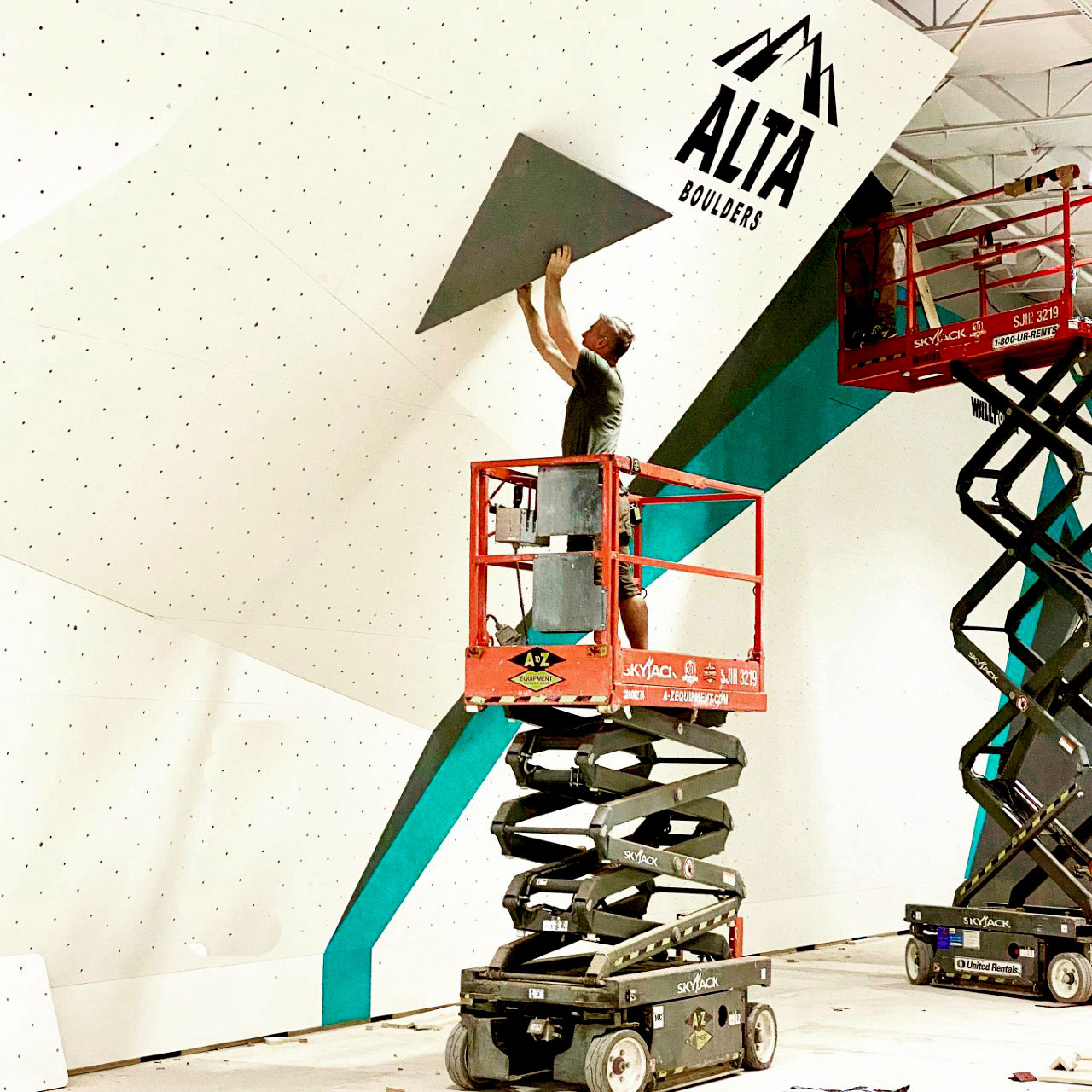
What are some of the trends that you’ve seen come and go?
Movement styles for sure. In the old days, if you were going to set something difficult, it was generally very small holds, either really bad slopers or very small crimpers. It was usually kind of jumpy and powerful and much more dynamic…Now you can set double-digit boulders or 5.14 rope climbs with absolute jugs if you know what you’re doing. And that just wasn’t the mentality back then…
In your experience with hold shaping and knowing the hold shaping industry, what are some of the trends there that you’re seeing?
…One thing that we’re in the midst of is the holds are getting really, really big. We’re seeing more and more screw-on features, whether that’s fiberglass or polyurethane or even wooden volume type shapes, but I think that that’s probably going to change in the near future. I don’t think they can get a whole lot bigger without being cost prohibitive as a shaper…
What is some advice that you can give a head setter or mentor or a leader of the industry?
I think it really comes down to having honest communication…There’s a lot of misunderstanding as to what the head [setter] role should be. It’s a management position. You’re managing a team, and sometimes the person who’s the head setter shouldn’t necessarily be the best setter. They, in my mind, should be the best people person on the team. They understand how to talk to people. They’re the one who understands how to give criticism where someone will take it, listen, and not shut down and feel attacked…
The education of new setters is largely falling on the shoulders of head setters or even the setters themselves to figure it out. How do you think this is going to affect the industry going forward?
I think if things don’t change, we’re going to plateau. People are going to age out. I’ll put myself in that box. I’ve been setting for almost 40 years now. I’m not a full-time setter anymore. I tend to set for contract gigs or new gyms or things like that. So, I think that as people age out, the burden is there for them to give back to the industry that treated them well all this time. And I think if people aren’t willing to share that information and pass it on and help take it to the next level, we’re going to get stuck at whatever the last level was.
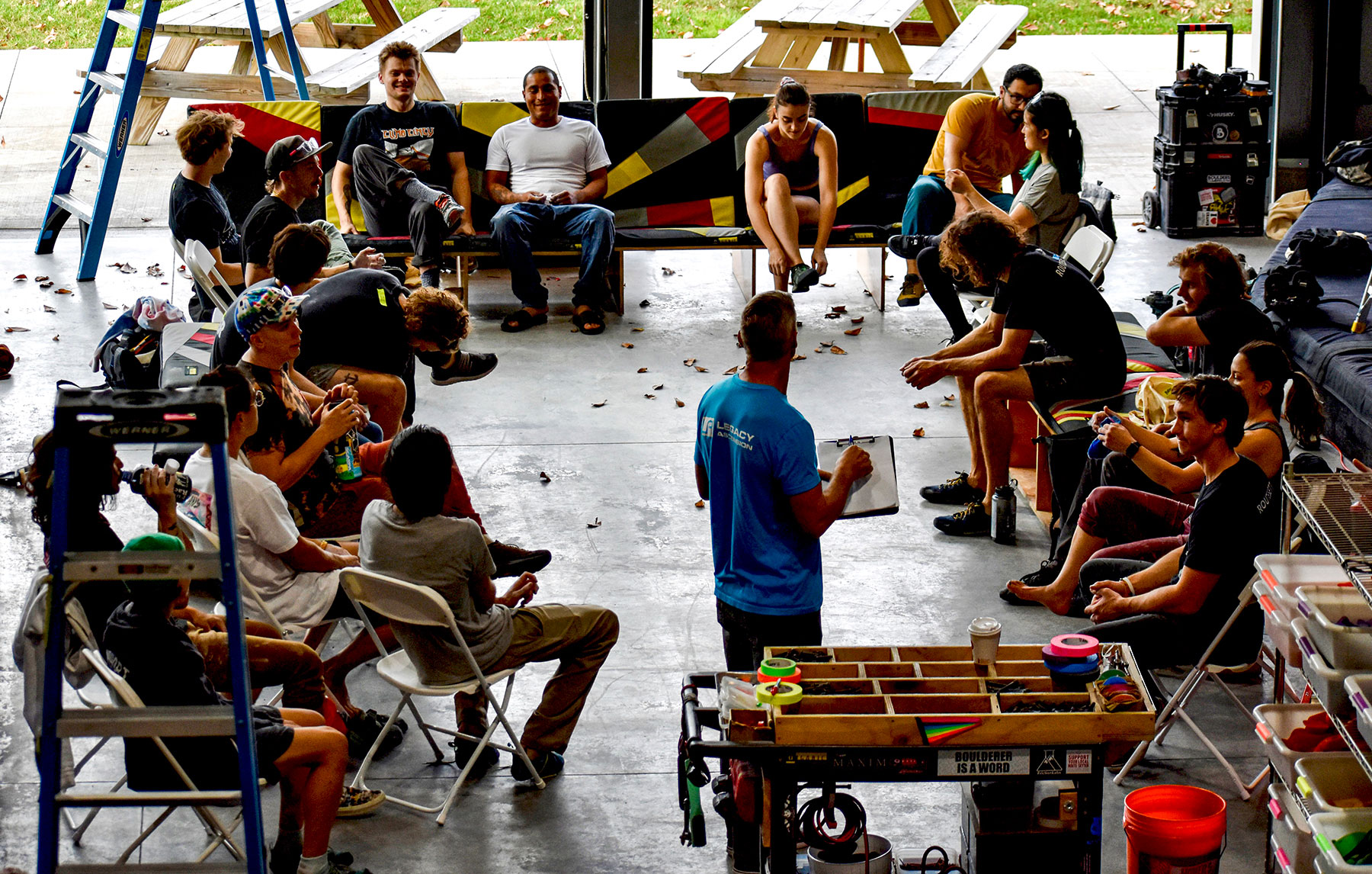
In the many years that you’ve been hosting setting clinics, do you see a big demographic change from the attendees when you first started versus now?
Yes, I think diversity in the people who are showing up. It used to be strong cis white males…Over the last, I’d say, five to ten years, especially, almost annually I’m seeing more and more minority groups or female setters…There have been missteps along the way, but I think, for the most part, the industry has taken solid steps to try and make things more open and inclusive. And I have certainly seen that as far as who’s signing up for events…
For the listeners who don’t know what the Showdown is, can you tell us a little bit about it?
I try and describe it as trade development under the guise of a competition…I’ve been trying to diminish the competitive aspect. We have a group of setters—depending on the size of the gym, it might be as few as 14 or 16, all the way up to 40—and you come in and you work with folks who you’ve never worked with before with holds that maybe you’ve never seen before in an environment that you’ve never been in before. You can’t pick your holds, you can’t pick the wall you’re setting on. We take all of that control out of the setter’s hands intentionally, just to kind of throw them off their game and see what they have to offer. We still judge, there are still prizes—that’s kind of what makes it work for the sponsors and for the community who might be watching it. But inside the event, there are a lot more conversations going on…
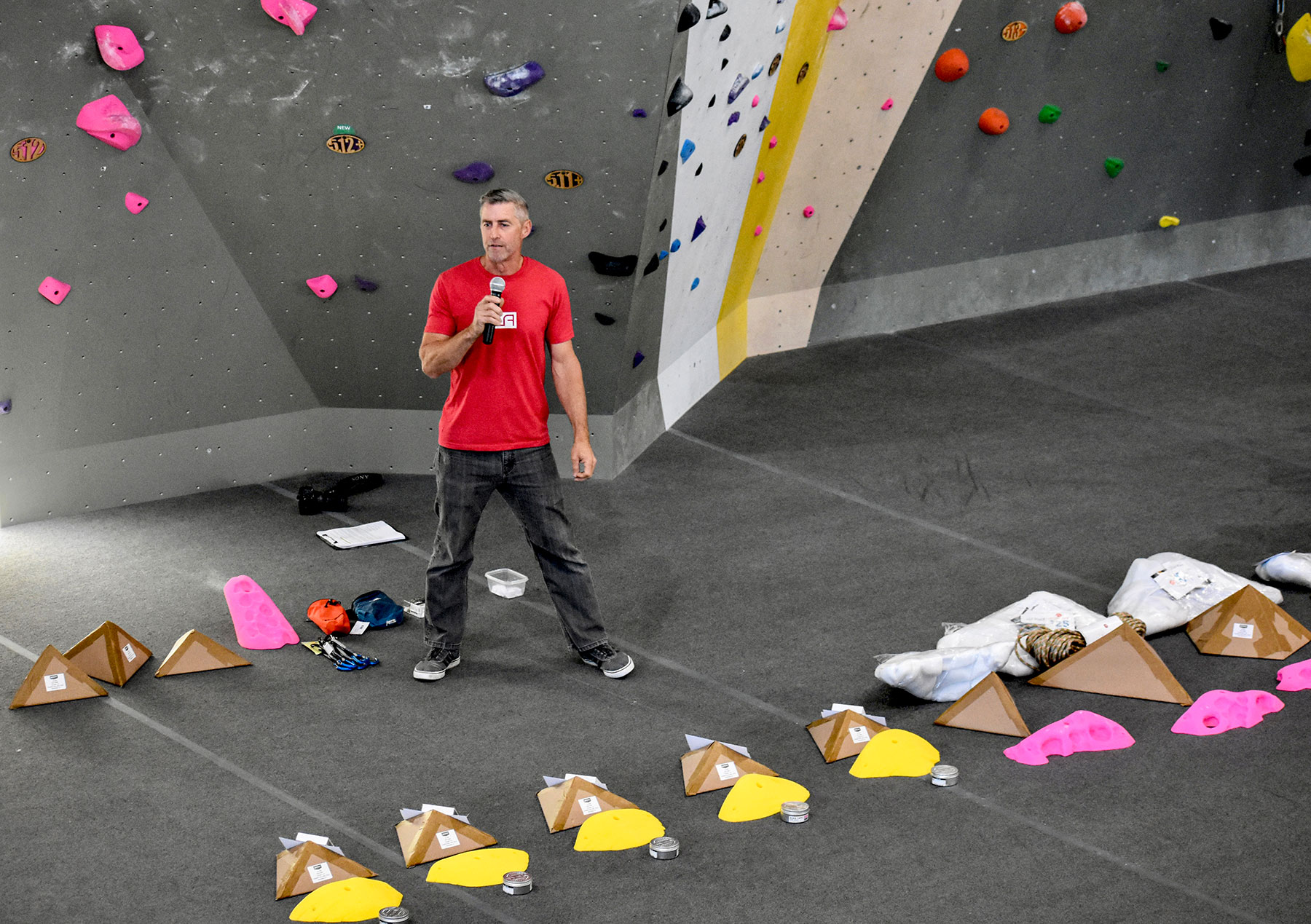
What are you looking forward to seeing in the industry in the coming years?
I want to see setters get their due, to be honest. I think that a lot of setters are out there just grinding away day after day in the trenches, doing often what is a thankless job, and they aren’t really getting the attention or credit or compensation or anything else that they deserve. I think that certain gyms out there, especially some of the bigger chains, value their setters quite well. They pay them well, they give them time off, they give them the support, whether that be yoga or PT or whatever that might look like in their situation. Some gym chains get it. Most of the gym chains don’t. There are a lot of setters up there who are severely underpaid. There are a lot of talented setters who want to get better but don’t have the opportunities to learn and grow. There are a lot of groups of folks out there who don’t feel validated and who want to be a setter. I want to see everyone who has the desire to be a routesetter have a path forward to become a routesetter…
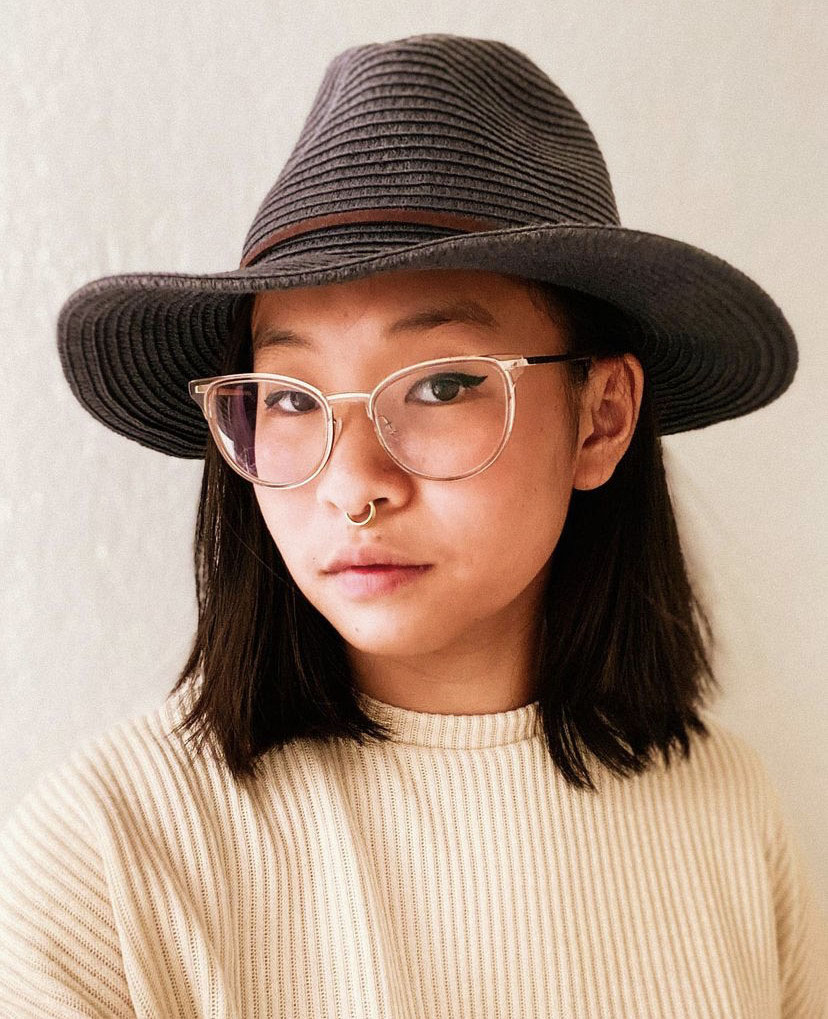
Holly grew up in Taiwan and Hong Kong. Now she lives in Denver where she reports, writes and routesets. Beyond the Climbing Business Journal, her writing has been published by Alpinist Magazine, Climbing Magazine, Gym Climber and Sharp End Publishing. Holly’s motto has always been: “keep it interesting.”
Read our interview with Holly: Storytelling Through Movement




